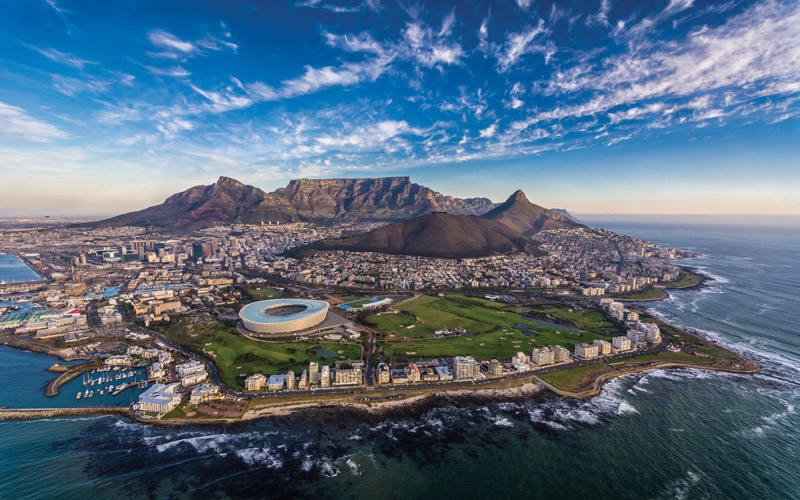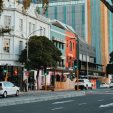The diamond showroom where you can polish your own stone
A Chronological History of Apartheid
Beyond this hill lies another and another. The journey is never complete.
When white European visitors, lead by Jan van Riebeeck, entered the Cape in 1652 they not only decided to stay but their aspirations for white supremacy gradually turned South Africa into a racially segregated state. In 1948, under the official name Apartheid, the population was divided into four groups: white, black, coloured and Indian. Despite its end in 1994 Apartheid has shaped South Africa economically, socially, psychologically and its political legacy can still be felt today.
Apartheid’s official existence lasted from 1948 until 1994.This article looks at important events and developments per decade.
1940's
The African National Congress (ANC), who actively promoted African rights, presented the government with an 'African Claims' document in 1943. It demanded full citizenship and the abandonment of discriminatory laws. When the government implemented The Prohibition of Mixed Marriages Act, the ANC responded with their ‘ Programme of Action’, which included boycotts, civil disobedience and stay-at-home strikes.
1950's
The Immorality Act (1950) made sexual relations with a person of a different race a criminal offence. That same year the new Population Registration Act compelled all South Africans over the age of 18 to carry an identification card which specified their racial group. The end of diverse residential areas was announced later that year, when the Group Areas Act designed different areas for each racial group.
The government’s ambition to construct an all compassing system of fully separated development manifested itself once more in 1951 through the Bantu Authorities Act, which constructed separate government structures for black and white citizens. The Bantu Education Act, introduced in 1953, consolidated the hierarchy of employment opportunities, by producing black education systems that would prepare pupils for lives as labourers. The “whites only” signs started to appear throughout the country after the Reservation of Separate Amenities Act was implemented. This Act reserved municipal grounds, buses, beaches, schools, universities for particular races.
In 1952 the ANC responded with the Defiance Campaign which aimed to overflow courts and prisons by deliberately courting arrests and imprisonment for minor offences in order to break down the system. Under the Suppression of Communism Act, 1950, the government was able to accuse Mandela and 34 others of communism, make protests virtually illegal and enforce the Emergency Act, which enabled them to declare a state of emergency when public order was considered endangered. But the ANC, together with Indian activists and radical whites, presented a Freedom Charter to the government that proposed a multiracial South Africa. The government responded by charging 156 activists with high treason.
Verwoerd's 'Grand Design'
”. In order to speed up the segregation process and ensure white control of South Africa, Verwoerd introduced The Promotion of Black Self-Government Act, which expressed his ideal of independent black ‘ homelands’ and white South African towns.In effect, this law would allocate Africans to different black homelands, rip them of their South Africanm citizenship and would turn them into commuting labourers or migrant labourers, whose temporary work permits allowed them access to jobs in the white towns. Verwoerd figured that if the blacks would be inhibited from acting as a single community, they could never outnumber the white South Africans. In Verwoerd’s version of ‘ divide and rule’, each group formed a minority of the whole. He presented his ‘ grand design’ in 1959
In 1959 the Pan Africanist Congress (PAC) emerged under the leadership of Robert Mangaliso Sobukwe and comprised of existing ANC members that did not support the multiracial ideals.
1960's
Apartheid brutalities escalated in 1960 when in the small town of Sharpeville police opened fire on a crowd of PAC demonstrators. As news broke that most of the 69 killed and 186 injured were shot in the back, further protest followed,. The West expressed a more hostile attitude towards the apartheid-regime and foreign investors started to take their business elsewhere. To silence the opposition Verwoerd declared a state of emergency which enabled him to detain anyone without trial and mobilize the army and police. He banned the ANC and the PAC and detained thousands of anti-apartheid activists.
Mandela, one of the key-leaders of the underground ANC, acquired the reputation of the 'Black Pimpernel'. To him and his colleagues, the only answer to the violence seemed to lie in violence itself. Mandela and his colleagues figured that a limited campaign of sabotage could scare investors off and cause sufficient disruptions in trade to force the government to negotiate. On 12th June 1964 Mandela and eight of his colleagues were sentenced to life imprisonment. To Verwoerd, the ANC was a ‘ troublesome minority stirred up by paymasters in Moscow'. Verwoerd’s assassination meant little to the crushed black resistance. Successor Vorster vowed to continue the grand apartheid-plan.
1970's
The government continued to move millions of people from their homes to black 'homelands'. Millions of people were removed from their homes and allocated to their designated ‘group areas’ or homelands. In 1970 around 2 million black men spent their lives circulating as migrants between their homes and urban employment, while others spent hours each day travelling to work. Although South Africa enjoyed economic growth white businessmen argued that better educated blacks were needed to combat a skills shortage. The government, eager to convince the international community of rights for blacks, granted independence to a number of 'homelands'.An estimated eight million Africans lost their South African citizenship between 1976 and 1981.
A new generation of black activists emerged. Steve Biko, one of the leaders of the BCM (Black Consciousness Movement), effectively promoted black pride, black awareness and highlighted the submissiveness of black South African men. His powerful messages were silenced when he was detained 29 times within only three years and he was eventually murdered whilst in the custody of the South African Security Police. As foreign criticism of Apartheid became pressing an outflow of foreign capital, sanctions and economic boycotts began to affect the economic interests of white South Africans, so much so that in 1978 new prime minister Botha called to relax certain education and labour laws. His call for modernization did however not signify a shift in ideology. On the contrary, to Botha a modernized version of apartheid would increase the system’s efficiency. Cautiously he relaxed certain education- and labourlaws. Yet the government also had to face an UN arms embargo and an oil embargo. Meanwhile, foreign-trained ANC guerillas began a low level sabotage campaign, selecting specific targets with high propaganda value. Botha kept pointing his finger to communism.
1980's
After people from around the world supported petitions and campaigns demanding Mandela's release ,Botha saw no option but to negotiate with black leaders. De Klerk, who took over from Botha in 1989, continued negotiations and declared that South Africa had to change fundamentally.
1990's
On 2nd February 1990 De Klerk announced Mandela's release, lifted the ban on the ANC and announced a democratic constitution. When Mandela walked out of Victor Verster Prison nine days later people knew that Apartheid was over.
1994 marked the birth of The Rainbow nation. The totalitarian regime quickly transformed into the country with the most liberal constitution in the world. However, redressing the apartheid-past and turning the words of the constitution into a lived reality on the South African grounds has proved to be a continuing challenge.
By Marion Hengeveld
---
Locals and visitors can discover something new during free walking tours of Cape Town.
For fascinating insights into the history of and life in Cape Town, be sure to visit our Cape Confidential Section.








